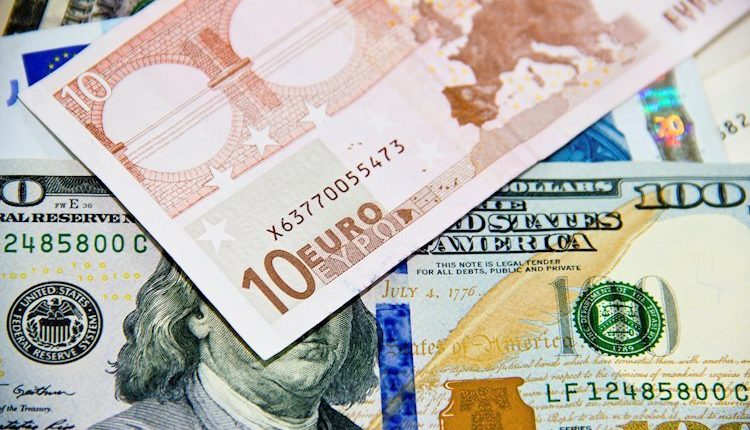- The Euro maintains the bearish tone against the US Dollar.
- Stocks in Europe open Wednesday’s session in a mixed tone.
- EUR/USD slips back to new lows near 1.0550.
- The USD Index (DXY) extends its rally to new 2023 peaks.
- Consumer Confidence in Germany expected to worsen in October.
- US Durable Goods Orders take centre stage across the pond.
The Euro (EUR) experiences an increasing bearish sentiment against the US Dollar (USD), prompting EUR/USD to decline and reach a fresh six-month lows near 1.0550 on Wednesday.
Conversely, the Greenback continues to strengthen for the fourth consecutive session, reaching new highs for 2023 around 106.30 when gauged by the USD Index (DXY). This level was last seen in late November 2022.
The further decline in the pair is accompanied by a corrective move in US and German yields, which abandon the area of recent multi-year highs despite broadly unchanged expectations in the monetary policy scenario.
Regarding the latter, investors persist in factoring in an additional 25 basis points rate increase by the Federal Reserve (Fed) by year-end. Meanwhile, discussions in the market continue to lean towards an impasse at the European Central Bank (ECB), even in light of persistent inflation levels that significantly surpass the bank’s target.
In the European calendar, Consumer Confidence in Germany is expected to weaken slightly to -26.5 in October, according to GfK.
In the US, Mortgage Applications tracked by MBA are due in the first turn, followed by the more relevant Durable Goods Orders data for August.
Daily digest market movers: Euro risks further weakness near term
- The EUR keeps the offered stance unchanged against the USD.
- US and German yields correct lower across different maturities.
- Investors continue to see the Fed raising rates by 25 bps before end of 2023.
- Markets speculate on probable interest rate cuts by the Fed in Q3 2024.
- Market chatter over a pause by the ECB remains on the rise.
- ECB member of the Executive Board Frank Elderson says rates haven’t necessarily peaked.
- Intervention concerns remain well and sound around USD/JPY.
- BoJ Minutes favoured the continuation of the current monetary stance.
Technical Analysis: Euro faces the next support at the March low
The EUR/USD continues to demonstrate signs of weakness, trading in close proximity to the March low around 1.0515.
On the downside, immediate support for the EUR/USD can be found at the March 15 low of 1.0516, followed by the 2023 low of 1.0481 seen on January 6.
Regarding potential resistance levels, there is a minor obstacle at the September 12 high of 1.0767, and a more significant barrier at the 200-day Simple Moving Average (SMA) at 1.0828. If the pair manages to break above this level, it could pave the way for further recovery, targeting the temporary 55-day SMA at 1.0879, with the possibility of reaching the August 30 high of 1.0945. Surpassing this level could shift the focus towards the psychological level of 1.1000, followed by the August 10 peak of 1.1064. Beyond that, the pair may retest the July 27 top at 1.1149 and potentially reach the 2023 high at 1.1275 from July 18.
However, as long as the EUR/USD remains below the 200-day SMA, there is a possibility that downward pressure will persist.
ECB FAQs
The European Central Bank (ECB) in Frankfurt, Germany, is the reserve bank for the Eurozone. The ECB sets interest rates and manages monetary policy for the region.
The ECB primary mandate is to maintain price stability, which means keeping inflation at around 2%. Its primary tool for achieving this is by raising or lowering interest rates. Relatively high interest rates will usually result in a stronger Euro and vice versa.
The ECB Governing Council makes monetary policy decisions at meetings held eight times a year. Decisions are made by heads of the Eurozone national banks and six permanent members, including the President of the ECB, Christine Lagarde.
In extreme situations, the European Central Bank can enact a policy tool called Quantitative Easing. QE is the process by which the ECB prints Euros and uses them to buy assets – usually government or corporate bonds – from banks and other financial institutions. QE usually results in a weaker Euro.
QE is a last resort when simply lowering interest rates is unlikely to achieve the objective of price stability. The ECB used it during the Great Financial Crisis in 2009-11, in 2015 when inflation remained stubbornly low, as well as during the covid pandemic.
Quantitative tightening (QT) is the reverse of QE. It is undertaken after QE when an economic recovery is underway and inflation starts rising. Whilst in QE the European Central Bank (ECB) purchases government and corporate bonds from financial institutions to provide them with liquidity, in QT the ECB stops buying more bonds, and stops reinvesting the principal maturing on the bonds it already holds. It is usually positive (or bullish) for the Euro.
Read the full article here

